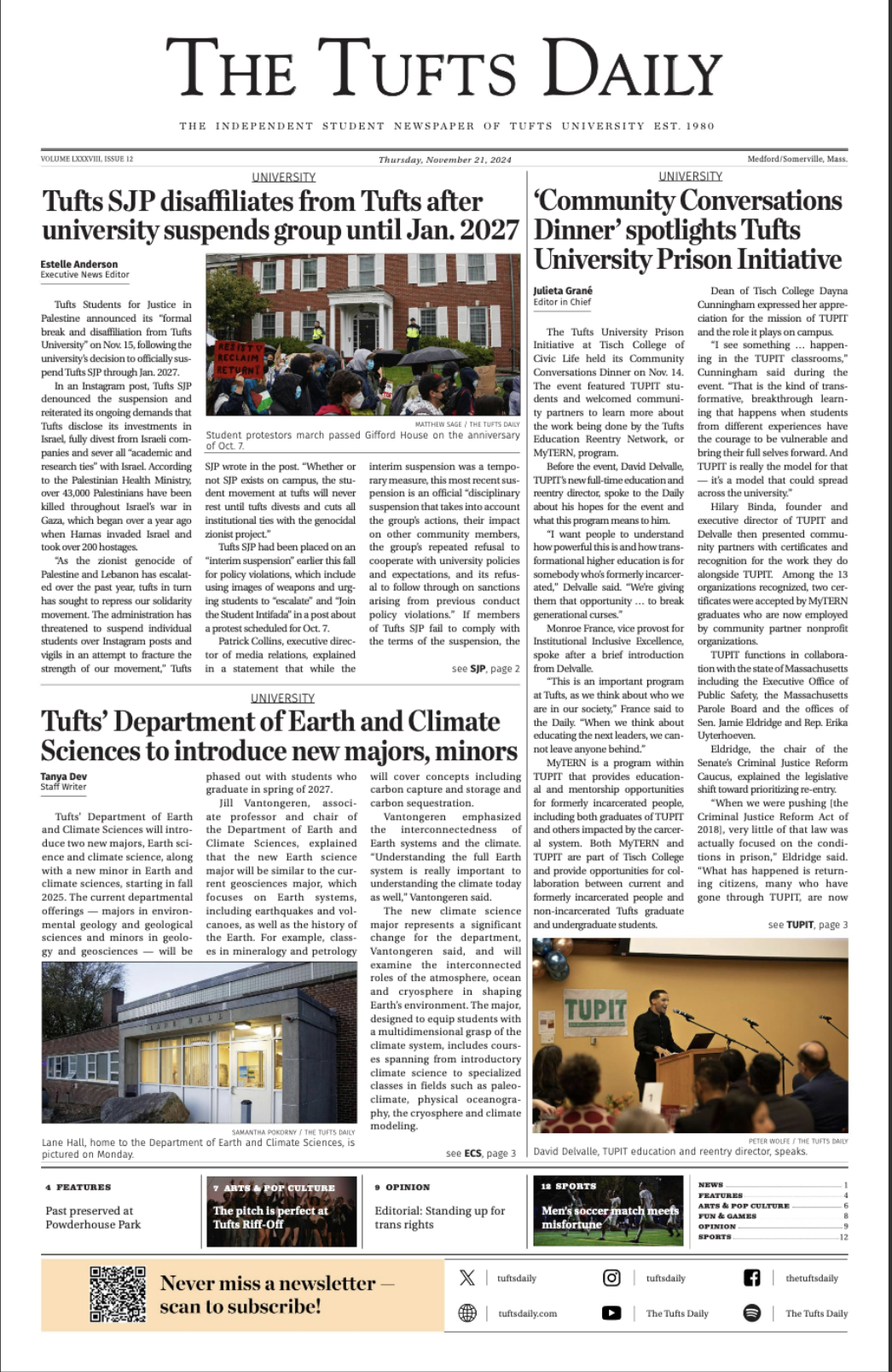As summer wanes and fall breaks, the glorious period of changing leaves comes and goes too quickly for most. But fear not, nature-lovers, the Harvard Museum of Natural History has its own store of treasures. The museum's current special exhibit, "Looking at Leaves," a collection of photographs by Amanda Means, is a life-affirming investigation of botany, photography, conservation and the fragile beauty of the natural world.
Means grew up on a farmhouse in flower-abundant upstate New York and attended school in New York City. Life in the city provided her with an awareness of the natural world's fragility, and her series of photographs reflects this empathy. Her technique involves no cameras; rather, a single leaf is placed in an enlarger and projected onto photograph paper, producing a huge (up to 38 by 46 inches) black-and-white print.
Means' simple process and innate sensibility produce well-defined prints without filler or fluff. The leaves stand alone against velvety-black backgrounds as a bastion of natural beauty. Peacock plants, maple trees and English ivy speak of grace and endurance. Some of the leaves are torn, and none are perfect forms, but they are all undeniably beautiful.
The blacks in "Leaves" are deep and dark and the whites are unbelievably light. The white stem of "Silver Nerve Plant" (1990) is strikingly pure and radiant. Even in its two-dimensional state, its glow overwhelms the senses.
Viewing this exhibit is not only a visual, but also an intellectual treat. In "Maidenhair" (1990) you can see the formations of some of the world's earliest plants -- parallel veins that evolved into the more efficient webs of most modern leaves. The soft and slightly sensual "Canada Mayflower" (1992) is like a black and white, botanically-correct Georgia O'Keefe bloom. All of the prints possess both scientific and artistic relevance, and the labels also include the scientific name of each work.
Each print is stunningly intricate. "Maple Leaf" (1989) is especially gorgeous, full of countless pores, inflections and tears. It indicates an incredible level of complexity in the world around us. Forget cells, molecules and atoms -- imperceptible intricacy can be found in the ordinary maple leaf. The viewing of this exhibit encourages visitors to look at trees in a new light.
These are forms in nature most people will never come across. In the starkness of Means' prints, "Hazel Alder" (1990) looks eerily similar to human cells and pulsing tissue, while "Rattlesnake Root" (1991) is strangely reminiscent of plowed fields and roads. Examining leaves on this level promotes a closeness with nature. Everything seems so connected that the photograph of a plant's tissue could be a photograph of a human lung.
This close connection with torn and magnified leaves serves to remind the viewer of a person's fragile role as both a caretaker and rent-payer in the environment. Means' self-stated ultimate objective is to promote this sense of uncertainty and to serve as a reminder of elements in nature that might be lost.
The Harvard Museum of Natural History does a wonderful job of presenting this exhibit. The grey-painted room that houses the series works well with the monochrome of the prints. Those who tire of pricey admissions and the sometimes-stuffy environment of classic art museums can feel confident that the Museum of Natural History is a worthwhile trip. At a mere $7.00 for students with a college ID, it is not a question of going, it is a question of when.





